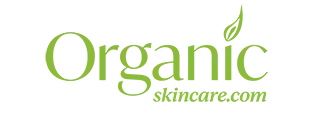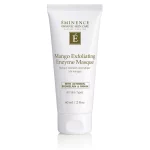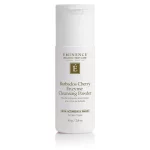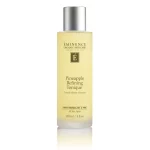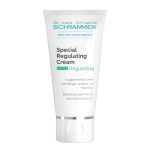

Organic Skin Care Supplies Wholesale List 2023 Update
Organic means that no pesticides, herbicides, or other chemical contamination is found in the ingredient. To label a product organic, all of the components must come from certified organic operations. The manufacturing facility must meet those standards too.
Natural has a looser definition. The United States government does not regulate this one. However, the ingredients should come from natural sources, like goat’s milk and lavender, rather than a chemical process overall.
Conventional refers to products or ingredients that have chemicals, preservatives, etc., in order to work “better.” There are only regulations on 30 skincare ingredients in the United States, while Canada bans over 600. That’s why people are talking about natural and organic skin care.
Looking For Your Own Organic Skin Care Private Label Products?
Supplier vs. Distributer vs. Manufacturer vs. Vendors
Knowing the terminology is difficult, especially when you’re just starting out. The four labels above refer to different parts of the supply chain, each serving a distinct function. You may not need all of them to be successful, though.
Supplier turns up two distinct places in the chain. First, there’s the supplier of raw ingredients. Second, there’s the creator of the product who does not sell it. In either case, the supplier tends not to have direct contact with the consumer.
At times, the manufacturer and supplier are the same entity. However, the manufacturer is responsible for creating the product that eventually gets to the consumer. Generally, the manufacturer does not sell the product themselves.
The distributor sells products from the manufacturer, typically in wholesale lots. Distributors typically contract with manufacturers so that there are a limited number of other distributors. Then distributors handle specific regions or accounts.
Lastly, vendors buy from distributors. A vendor then sells the product to someone else. Generally, that’s the individual consumer. However, nothing prevents a vendor from selling to another company.
Nature’s Brands
Nature’s Brands operates a certified organic facility in Tennessee. The company manufactures to order but does not offer custom formulation. The formulations available have extensive testing, and you can get them certified organic for marketing purposes.
Pure Source
Pure Source has devoted tremendous time and resources to its around-the-clock quality assurance staff. From our laboratory to our production staff, Pure Source employees are all trained experts on GMPs, SOPs and all FDA rules and regulations.
Essential Wholesale and Labs
Essential Wholesale and Labs offers many unique private label options for your business. The company does everything from stock bases to entirely custom products. Additionally, Essential advertises low minimum orders, including no minimum on some products.
Wild West Skin Care
Wild West Skincare offers an exclusive experience that helps you launch your product line. The company owns a farm where many of its ingredients grow. The company provides private and white label from their lab in the U.S.
Willo Naturals
Willo Naturals is another USDA certified organic facility in the United States. The company offers a full line of organic private label options, as well as custom options for your brand. The organic product line is also easy to locate and research on the website.
Spa De Soleil
Spa De Soleil is another option with low minimums. The company provides an organic line and will let you customize it with fragrances. For private label, the minimum order quantity is as low as six units in retail size packaging. Unfortunately, you must apply your own labels.
Alchemist Labs
If you have a little time, Alchemist Labs is another Europe based option. The company offers three private label plans, each with a specific minimum order quantity. In most of the possibilities, Alchemist Labs can even handle the labeling.
Custom UV Printing For Your Skin Care Bottle
This channel is all about DIY on Cosmetics, Health, Food, Hygiene & Life.
Cecil Vig YouTube Cannel
CUSTOMIZED PRINT ON YOUR PACKAGING. Starting Your Own Private Label Skin Care & Hair Care Line Has Never Been Easier.
Wholesale Natural Products Distributors
Nutrix International
Nutrix International offers certified organic formulations ready for private label. The company is also willing to develop a product exclusively for you. Nutrix International offers additional business services to help you launch.
Life Root Healing
Life Root Healing offers an organic and handmade option for your products. The company provides stock, minor customizations, and custom formulations. They also advertise using exclusively organic and wildcrafted ingredients.
Wholesale Central
Wholesale Central is a massive site offering wholesale options on everything from electronics to natural products. There are so many options that the site even lists other distributors if you want to use them.
Naturelle Pro Beauty
Naturelle Pro Beauty is based in Europe. That means they carry options others do not, and you can create a luxury brand feel within your store. After all, you’re not carrying the standard products.
Wholesale Crowd
Wholesale Crowd aims to satisfy beauty sellers who want to dominate Amazon. The site offers Amazon-specific services you can take advantage of, or you can use the products wherever you like.
MinMaxDeals
MinMaxDeals offers an eclectic selection of cosmetic and skin supplies. Not all of the options are natural, so make sure you read through the whole listing before purchase. While the company is newer than many, it’s also doing everything right.
Global Prime Direct
Global Prime Direct offers a wide variety of merchandise, including beauty products. The business is set up to work with Amazon or your own site. Unfortunately, you need to sign up to see what it offers.
One Tree Brands
One Tree Brands is a one-stop-shop for everything beauty-related. The company offers both natural and conventional products, so read carefully before purchase. The company also provides upfront tiered pricing.
Wholesale Skin Care Products Manufacturers
Green Acre
Green Acre both creates custom formulations and manufactures them. The company also offers regulatory support and testing. Green Acres also works with low minimum order quantities, which is excellent for testing products on the market.
My Skincare Manufacturer
My Skincare Manufacturer is in Australia and ships internationally. The company offers a comprehensive product development package you may find useful. Additionally, the company supplies a wide range of packaging options.
Radical Cosmetics
Radical Cosmetics offers a wide variety in both the skincare and cosmetics fields. Additionally, the company provides specialty mineral makeup manufacturing and unique packaging choices to help you stand out.
Allure Labs
Allure Labs has an extensive history of turning out products that change the skin care game. The company does research and development, manufacturing, and turnkey options. Additionally, packaging and labeling can be mechanically applied.
Aegle Nutrition
Aegle Nutrition is another option for you if you want to keep everything with a single company. From formulation to shipping, Aegle Nutrition has a process for it. Additionally, the company advertises being able to fill almost any container if you want something unique.
Tash Cosmetics
Tash Cosmetics is an option if you already know what you want to create and have the formula in hand. Minimum order quantity is in line with what a medium to large business needs, so this may not be the best option if you’re just starting.
Creative Essences
Creative Essences offers the typical range of skincare products for manufacture. The company provides everything from compounding to filling, though you do need to supply your own labels if you go this route.
Wholesale Organic Skin Care Products Suppliers
Eminence Organics
We believe in providing the best skin care products possible. Our products are proudly free of parabens, animal by-products, propylene glycol, sodium lauryl sulfates, harmful colorants and fragrances, mineral oils, petroleum, and other harsh cosmetic chemicals.
ilike Organics
Hungary is a land filled with natural hot springs, soil just right for growing succulent fruits, vegetables and herbs, and a culture of caring for the skin. From these roots, the ilike organic skin care line was born. And for six decades these products have helped people live beautifully.
California Skincare Supply
California Skincare Supply specializes in esthetician supplies but also serves as a wholesale option. The company stocks over 30 brands that are used in professional settings as well as personal tools.
Cosmetix Club
Cosmetix Club offers wholesale prices on well-recognized brands in the United States. The company offers specific product lots and mixed lots, perfect for smaller businesses. The company also offers worldwide shipping.
USA Wholesale
USA Wholesale focuses on makeup and skincare. The company does wholesale on products as well as mixed boxes of product. The company ships to all 50 states, though the price does vary based on weight.
Bangalla
Bangalla started in dropshipping and then moved into wholesale. The company focuses on organic and natural products. The company does not require a minimum order, though you do need a federal EIN.
Beauty Joint
Beauty Joint has both wholesale and dropshipping options. The company is a licensed distributor for many brands on its site, while others were procured from the market. You do need a wholesale account to view those prices.
Massage Warehouse
Massage Warehouse offers a unique assortment of skincare products. The company aims to assist massage therapists with effective products. That means many of the products available have a luxurious feel without breaking your business budget.
Alibaba
Alibaba is a unique platform that links you primarily to suppliers in China. The platform offers an impressive range of options. However, you’ll need to do extensive research and interviewing before deciding on a supplier.
Cosmetics Raw Materials Suppliers
Making Cosmetics
Making Cosmetics has supplied ingredients for over 20 years. The company offers both small and bulk ingredient sizes, as well as a variety of supplemental services. The company maintains WSDA Organic Food Program certification.
Grant Industries
Founded in 1938, Grant Industries is involved in the research, development, manufacturing, and marketing of specialty performance ingredients. A leading global provider to the personal care and beauty industry, Grant Industries dedicates its business on providing materials that are safe for consumer use with superior quality.
Stockmeier
Stockmeier offers raw chemical components for cosmetics, such as dispersing agents. The company has extensive partnerships to ensure the quality of the ingredients. Additionally, they’re willing to tailor products to your business needs.
Wholesale Supplies Plus
Wholesale Supplies Plus offers everything you could need for making cosmetics, including soap. The company also provides helpful calculators so you can know how much you need for a batch with precision.
Lotioncrafter
Lotioncrafter is suited for both small and large companies. The business provides everything from concentrated active ingredients to botanical extracts. Lotioncrafter offers a free formulary if you want a starting point.
Ingredients to Die For
Apart from the dramatic name, this is a one-stop-shop for ingredients. The quantities vary from ounces to tens of pounds, so it’s suitable no matter where you are in your business. The website even includes suggested applications and where to add them in the product creation process.
The Herbarie
The Herbarie offers quality raw cosmetics ingredients headquartered on a 21-acre farm. The company sells everything you could need for cosmetics, though the herbs are genuinely a specialty.
Organic Skin Care Vendors
OrganicSkinCare.com
Organicskincare.com started back in 2003 and curates its product list heavily. Licensed estheticians provide customer service so that you can find the right products easily. All products are natural and proven effective.
Detox Market
Detox Market is an excellent option for everything related to beauty and wellness. The company actively screens out harmful ingredients and focuses on effective, beneficial ones before accepting products.
Credo Beauty
Credo Beauty defined a clean beauty standard and holds all of its partners to that standard. Items like ethics and sustainability are key factors in whether you see a product in the store. With over 130 partners, you have many options here.
Thrive Market
Thrive Market may be known for food, but it offers an impressive natural beauty selection as well. While the site does require a membership, the items are provided at closer to wholesale prices. You can also get ingredients to DIY your routine.
Aillea
Aillea is an excellent option if you want luxury with your natural skin care routine since they partner with more than 50 brands. The company focuses on transparency with ingredients and formulation.
Follain
Follain offers a unique shopping experience since they have a match guarantee for you and their products. The company restricts ingredients and has an approval process before you’ll see anything new in their store as well for peace of mind.
Safe & Chic
Safe & Chic offers over 160 brands that meet its clean and green beauty standards. The company wants people to have options that are actually good for them, so you can easily find products that you’ll love.
Beauty Heroes
Beauty Heroes started to offer women nontoxic options that did not affect their health. The company holds one of the longest banned ingredients lists in the United States and requires efficacy from every product.
Beauty Heroes also offers a subscription box if you want to try new natural products without the commitment.
Wholesale Organic Ingredients
From Nature With Love
From Nature With Love offers an extensive collection of organic ingredients amidst its conventional ones. The selection is expanding as more sources are located. The facility also carries a USDA certification.
Praan Naturals
Praan Naturals offers a unique selection of certified organic ingredients. These range from berry seed oils to sea vegetables. If you’re looking for some more exotic ingredients, Praan Naturals is an option.
Dehydrates Inc.
Dehydrates Inc. primarily focuses on food products, and they added organic wholesale ingredients more recently. However, Dehydrates has extensive experience and certification, making it easier for them to find you ingredients that others may not offer.
The Green Labs
The Green Labs supplies both organic and conventional ingredients. The company tends to focus on ingredients with broader uses, such as in food. The website is available in both English and Korean.
Hummingbird Wholesale
Hummingbird Wholesale specializes in direct from the farm ingredients from the U.S. in general and the Pacific Northwest specifically. Hummingbird specializes in organic products and carries only ethically traded ingredients.
Copra Coconuts
If you want to use coconuts in your products, Copra Coconuts is a reliable option. The company sources from small farms in Thailand, using minimal processing to produce several coconut products.
American Botanicals
American Botanicals supplies both organic and conventional. The company offers harvest schedules for each product, so you can plan your year around having fresh ingredients. Most of the organic options are spices.
Ciranda
Ciranda offers a selection of organic ingredients that are also fair trade. The company provides several staples of the organic skincare product industry, like cocoa and oils. Ciranda also supports sustainability initiatives.
Wholesale Private Label Skin Care
Pravada
Pravada mixes natural and organic ingredients into an impressive array of skincare products ready for private label. The company offers customizable scents on many products, which you can use for branding.
Made By Nature Labs
Made By Nature Labs is headquartered in the European Union but offers worldwide shipping. The company provides private-label as well as custom formulations. That makes it easier to transition as your business plan evolves.
Additionally, meeting European Union standards may be useful as your skincare label expands. The certifications do transfer back to the United States as well.
GoodVara
GoodVara operates in over 50 countries with around 400 stock formulations. This selection makes it an appealing place to start your private label skincare product journey. You can start anywhere, and the company does have experience with customization.
Nardo’s Natural
Nardo’s Natural is specifically built for private label. The company offers free design services, so if you do not already have a logo or packaging in mind, it’s a reliable option. The company launched using the Shark Tank T.V. show.
Vitelle Labs
Vitelle Labs offers a unique natural and organic ingredient-based skincare product line. However, the company also provides conventional products for private label. The products are also artificial fragrance-free and use other green ingredients.
RainShadow Labs
RainShadow Labs is in St. Helens, Oregon. The facility crafts primarily natural products with several organic formulations available as well as conventional. RainShadow Labs offers product development and sustainability for your business.
Totally You
Totally You is a well-established option for private label skincare products. The company offers a variety of product lines. As a bonus, labeling your products, including design, is part of the price.
Botanical Science
Our formulas were created with one purpose: to be the best! We include the finest quality, highest-performing ingredients in the highest concentrations that yield the desired results.
We have over 70 proven formulas that you can choose packaging, product names and promote as your own brand or we custom formulate!
Cosmetic Solutions
Cosmetic Solutions offers a comprehensive private label program based around your brand. The company employs several types of branding and packaging experts to help you launch your new skincare product line.
Vista Color
Serving an array of specialized markets including pharmaceutical, nutraceutical, cosmetic, health, beauty, food, spirit, confectionary, cannabis, and consumer goods.
Wrap Up
Wholesale skincare product production is a complicated topic with many distinct ways to go about it. You will need to navigate this maze to launch the skincare product line of your dreams or grow an existing product line.
Whether you start with a private label and then start manufacturing your own products, develop a custom formulation, or work with a big company, there are trustworthy partners available to you.
Do you have a favorite that we missed? Let us know!
Clelia Gaksteyn
I'm a highly skilled and knowledgeable esthetician who has worked in the skincare industry for over 20 years.
In addition to her work as an esthetician, I am also a writer and blogger, sharing her knowledge and experience in the skincare industry with a broader audience. I write about the latest skincare trends and product reviews and provide tips and advice on achieving healthy, beautiful skin at OrganicSkinCare.com and on social media.
